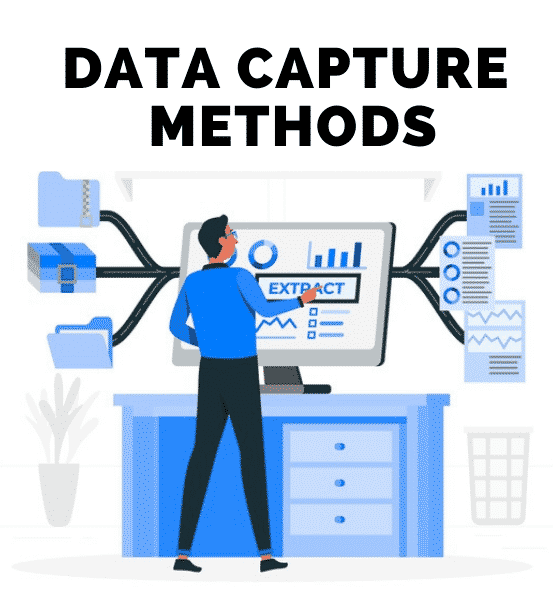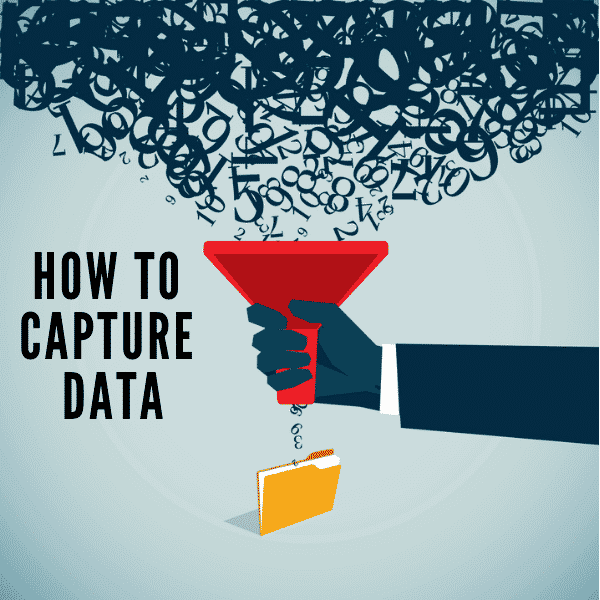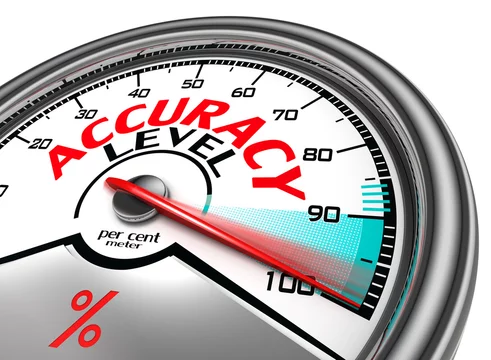What is Data Capture?
Data capture is the process of collecting structured and unstructured information electronically and converting it into data readable by a computer.
If you’re wondering how data capture works or how it could benefit your business, this guide is for you.
Data Capture Process
Data capture allows you to collect information. The idea behind data capture process is simple. Take, for example, a patient filling in a questionnaire on their first visit.
This is the process that creates data. They’ll enter their name, their address, and other relevant information. Now you have the information, but how can you use it?
Digitizing this information makes it more useful. You can cross-reference it more easily. It also becomes more accessible.
How to Capture Data?
You’ve been capturing data at least for some time. You can capture data from paper documents, for example, by using forms designed to be read by machines.
Using paper documents could be holding you back though. It’s easier to use data if it’s in a digital format. Some data capture processes allow you to collect information from unstructured letters.
Data capture can help you collect information from paper documents though. There are several methods for capturing the data to complete this task, depending on the type of documents.
While capturing data, you’ll identify the document you want to collect the information from. You’ll then decide on an appropriate method. Digitizing unstructured data requires specialized data capture tools and many organizations find it is more efficient to partner with data entry service providers.
Are you looking to automate your Data Entry?
iTech data entry automation team apply OCR, RPA, or Machine Learning to any data entry project and meet any unique need.!
Data Capture Methods

For example, capturing data from an email is a different process than scanning in a paper form.
One method of capturing data is manual keying. In this method of data capturing, someone will type in the data by hand. Though many businesses still rely on outsourcing data entry to companies that have trained experts to manually input information. As you might imagine, this isn’t the most efficient process.
Here are some of the best data capturing methods that businesses are using to capture data in 2021.
-
- Manual data capture
- Automated Data Capture
- Nearshore keying
- OCR (Optical Character Recognition)
- ICR (Intelligent Character Recognition)
- Barcode/ QR Сode Recognition
- Voice Capture
- IDR (Intelligent Document Recognition)
- Digital forms (Both Web and App)
- Digital Signatures
- Web Data Capture
- OMR (Optical Mark Reading)
- MICR (Magnetic Ink Character Recognition)
- Image & video capture
- Paperless Forms
- Double Blind Data Entry
- Smart Cards
- Magnetic Stripe Cards
Challenges in the Current Data Capture Processes
Essentially, data capture is the process of transferring data from a physical to a digital format. Manual data capture can quickly become difficult, drab, and mind-numbing, resulting in several issues.
The following are the primary issues in current data capture processes:
- Divided focus on core business tasks
- High costs
- Increased error rate
- Increase in the amount of data capture
- Misinterpretation
- Strained quality control
- Time consuming
1. Divided Focus on Core Business Tasks
Because manual data entry can be tedious and time-consuming, employees are left with no time to focus on their core business tasks.
2. High Costs
In manual data capture, employees must get trained correctly, which costs both time and money. Thus, manual data capture can incur high costs and can be challenging to do consistently.
3. Increased Error Rate
Regrettably, when individuals don’t get trained properly, misunderstand remarks, or cannot read forms accurately, there can be an upsurge in errors, thereby lowering the brand’s credibility, and ultimately, having a significant impact on internal operations and customer satisfaction.
4. Increase in the Amount of Data Capture
Any unexpected rise in the amount of data that needs to get captured could increase errors. This increase could be due to a surge in sales or the establishment of a new location. In-house data capture teams may also get strained as a result of this.
5. Misinterpretation
When people manually do data collection, there is always the risk of ambiguities and misinterpretations, which can ultimately affect data quality, and the decisions are undertaken based on them.
6. Strained Quality Control
Quality control is a crucial part of manual data collection, and it must be handled and carried out with caution to guarantee that the data is accurate. Manual data capture is vulnerable to basic human errors, scalability challenges, employee turnover, and continual training since it relies entirely on humans and human decision-making.
7. Time Consuming
Despite how quickly one can process or type data, manually entering data takes a long time and can be difficult at times. This time drain can cause people to lose focus and waste more time, ultimately leading to a delay in data availability.
However, with the advancement of technology and the exponential growth of automation, manual data entry is becoming less and less necessary.
Why use automated data capture?
Data capture has evolved phenomenally from paper to the automated data capture methods like Optical Character Recognition, Robotic Process Automation, etc.
Automated data capture reduces the need for manual data entry. Instead, it uses automated data entry software to collect data from data forms, surveys, invoices, docs, email, fax, and more. Then, it converts it into meaningful insights as a readable digital format with more accuracy and less cost.
A Leading Robotic Process Automation company, UiPath unveiled the study last year that nearly 50% of businesses globally will increase Robotic Process Automation adoption due to COVID-19.
Study conducted by @forrester on behalf of #RPA leader @UiPath finds nearly 50% of businesses will increase #automation adoption due to #COVID19 https://t.co/INFIxYF3Hu #robotics
— Lisa Brouwers (@LJBrouwers) July 28, 2020
Let’s take a look at some of the major benefits of data entry automation to help you learn how it’ll help your business thrive!
6 Benefits Of Automatic Data Capture
Here are some of the other main advantages of using Automatic Data Capture.
- Increases Employee Satisfaction
- Reduces Errors
- Eliminates Hidden Costs
- Enhances Productivity
- Always Available
- Enhanced Visibility
1. Increases Employee Satisfaction
Manual data entry is tedious. It’s also frustrating for many of the employees who are tasked with manually filling in forms. It leaves them feeling unappreciated and under-utilized.
Repetitive, monotonous tasks are mentally draining. This isn’t just bad for employee morale, it’s also bad for accuracy.
Mental fatigue and lack of concentration lead to errors. Which leads to our next point.
2. Reduces Errors
Eliminating errors is one of the top reasons to adopt data capture automation if you haven’t already. Automatic Data capture greatly reduces errors, so your organization can focus on more important things.
As a general rule of thumb, a business can spend $1 to prevent errors in data capture. Correcting that error could cost up to $10, in comparison. Not catching that error could result in up to $100 in lost revenue.
So you’re essentially preventing $100 of loss for every $1 spent on error prevention. That’s not even considering the time and stress you’ll save.
3. Eliminates Hidden Costs
Accounts payable departments have all manner of hidden costs and expenses. First, there’s the payroll for employees. Then there’s the cost of printing and distributing invoices.
That’s not even to mention the potential costs of late payments or misplaced documents. In fact, the costs of manually processing invoices have increased from $10.15 to $22.75 over the span of ten years.
Automatic Data capture can cost up to 20 times less than manual data entry.
For one, automated data capture automatically sends invoices by sending updates to a network location. Notifications are generated automatically when the network location is updated.
This completely eliminates the possibility of overlooked invoices. It also eliminates the cost of printing and mailing paper invoices, as an additional benefit.
It also hugely reduces the amount of time it takes for invoices to get paid. When an invoice is approved almost instantaneously, it can mean the difference between being paid in a matter of minutes instead of several months!
4. Enhances Productivity
Manual data entry is time-consuming an inefficient for a variety of reasons. First, someone needs to sort and identify the data, making sure it gets to right department. Then someone’s got to enter that data. That’s not even considering the possibility of human error and its attendant costs.
With automated data capture, everything is automatically organized, extracted, and distributed with no human involvement. This doesn’t only include digital documents. Multi-function scanner/printers are able to do the same thing with paper documents.
Optical Character Recognition (OCR) extracts numbers, the total due, line items, and other pertinent invoice data. Many companies take advantage of dedicated OCR services to transform their data into editable structures. OCR outsourcing helps to preserve entire data securely while also ensuring invoices are cleared on time.
OCR automated data entry software makes it easy to create scanning templates for recurring invoices. This lets the scanner know the location of where specific data is located on invoices.
Data capture automation also checks for data accuracy. This also reduces the workload for management. Only inaccurate invoices need to be brought to their attention.
5. Always Available
“Time is money,” as the popular saying goes. Downtime means lost money, as a result.
More and more daily business activities are expected to be online at all times, these days. Order entry, reservations, shipping orders, assembly instructions. If any of these things go offline, a business suffers.
With so much competition in today’s digital economy, there’s great pressure for businesses to always be online. Depending on the size of an organization, even a few minutes offline can mean millions of dollars in lost revenue. That’s not even to mention the loss to your reputation.
Data capture automation does more than automate your paperwork. It also automatically creates backups of your data. That means you’ll never lose important documents.
You’ll also be safe from human error, in case something goes wrong.
6. Enhanced Visibility
Automation in data capture ensures that everybody’s on the same page. It also means that everybody with access can get at the same resources.
Think about the old days of paper filing cabinets. Only those in physical proximity to the file room can access those files. That’s not even mentioning how difficult and inefficient it can be to find anything in those files.
Automated data capture takes full advantage of cloud-based computing. It ensures that all of your folders and files are always accessible to everyone with access. It also makes sure they are easily searchable and organizable.
These are just a few of the almost endless advantages of automation in data capture.
Data Automation is revolutionizing every single thing about the way we conduct business in this day and age. Get on board now and see the results for yourself!
Benefits of Data Capture for Businesses
Let’s look at the idea of the patient ID barcode in healthcare. All documents related to a patient include this barcode. It contains information about the patient, such as their name and medical history.
Scanning the barcode gives access to the information. The patient can be quickly identified. Test results will always be associated with the right patient profile.
What about ICR and OCR? Both are useful if you have paper documents you want to collect information from. ICR is very useful if you need people to fill in forms by hand.
Using data capture technology improves your business’s efficiency. You can process forms in less time, and information becomes accessible sooner. If you use a database, the information then becomes accessible from almost anywhere.
Better information capture can also help you provide better customer service. It’s easier to cross-reference information in the database. It also allows you to perform data analysis to discover patterns.
Here is a quick breakdown of the 3 top benefits of data capture for any business
- Increasing Security and Storage
- Reducing Mistakes and Improving Accuracy
- Leave Paper Behind
1. Increasing Security and Storage
It’s easy to damage paper documents. They’re also bulky, so storing them can become a problem for a business. People who aren’t authorized to see them may also be able to access them.
Data capture can help resolve these issues. You can control who sees what information. It also means you don’t need to store reams of paper in file folders.
To assure data security, the European Union has established the General Data Protection Regulation regards Data Capture. With the implementation of GDPR, we’ve to be more concerned than ever with our data.
2. Reducing Mistakes and Improving Accuracy
Manual input of data is bad because of high error rate.
A customer may fill in a form incorrectly. The person keying the information in to the system later may make an error as they enter it. Even if you use a human quality control process, you’ll still likely have a high error rate.
With an automated process, you can reduce the number of errors during the capture stage. It’s also easier to cross-reference data and validate it. Indexing information is easy as well.
This also helps you reduce costs and improve customer service. Delivering great service is easier when your information is accurate. Spending less time fixing errors in your data saves both time and money.
In short, there are many advantages to adopting automated data collection methods like ICR and intelligent OCR.
3. Leave Paper Behind
If you’re still using paper documents and manual keying, it’s time to make a change. There are so many better ways to capture the information you need for your business.
Data capture helps you collect information you might not be capturing right now. Lower error rates and faster processing times benefit your business and your clients.
The Future of Data Capture Industry with AI
As the application of AI exponentially grows by the minute, the following previews the future of the Data Capture industry:
1. Increased Speed of Analysis
Previously, data processing and analysis had to get done manually. These activities are done instantaneously with AI technology, allowing firms to solve problems faster and allowing data management professionals to focus on other core and more vital responsibilities.
2. Real-time, Streaming Analytics
Organizations will perform real-time streaming analytics to acquire up-to-date data, accurate to the second, as AI gets progressively integrated into the enterprise.
3. DevOps Workflows will overtake Application Development
Suggestions and recommendations will become more refined as AI and machine-learning systems learn and grow. This workflow could lead to more firms implementing AI-based DevOps workflows for application development, empowering engineers to integrate and deliver software upgrades that continuously take advantage of AI knowledge and learning.
4. AI will Transform all Industries
Industries will shift dramatically as AI advances and enterprises build workflows that enable them to maximize value. With AI-powered tools and other innovations, healthcare providers, banks, freight companies, Human Resources, and every other industry will be able to deliver more efficient, cost-effective services.
Want To Learn More About Data Capture?
We are passionate about the possibilities of digital technology and all the ways it’s improving the ways we do business in the 21st Century. Work with us, if you’re ready to make your data capture process as painless and efficient as possible!







